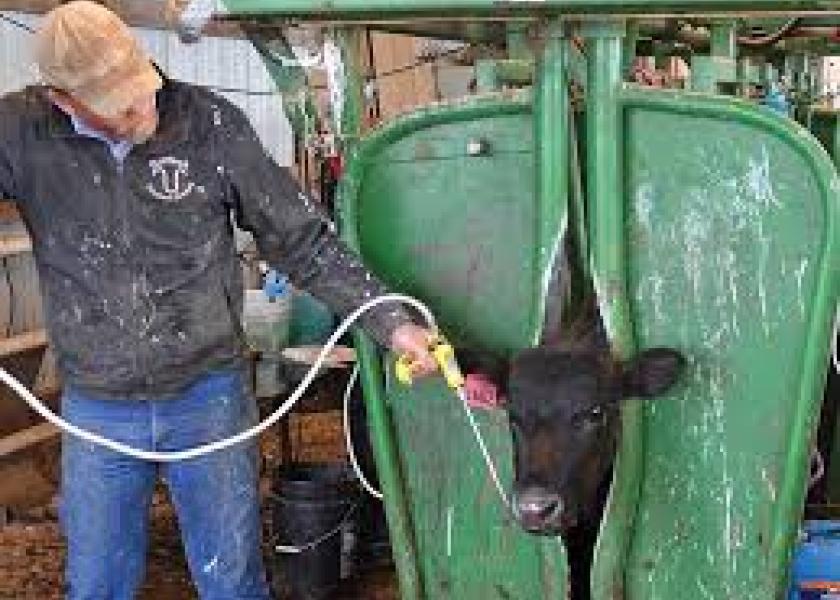Dealing with the Big 4 Parasites in Cattle

Parasite control isn’t a once-a-year thought to contemplate prior to spring grazing. It is constant management consideration throughout the year with different parasites popping up depending on weather and location. For cattle producers there are four major parasites to contend with during the year: lice, worms, ticks and flies.
Here are some management tips to keep in mind when considering parasite control programs:
1. Flies
Horn flies are going to be around for producers every year and compounding the problem is the issue of resistance, says Justin Talley, entomologist with Oklahoma State University.
He advises rotating the class of insecticide used to control horn fly populations. “I would say 90% of our pour on products controlling horn flies are mostly pyrethroids,” Talley says.
An organophosphate spray can thwart flies during the season. Using a macrocyclic lactone dewormer which include ivermetictin and moxidectin can help kill flies that still bite treated animals. Another concept is killing eggs in manure with feed-through products such as insect growth regulator (IGR) in mineral. The only problem is there are no guarantees all cattle will eat enough IGR in mineral to stop fly reproduction.
Another thought is to rotate pastures to move the manure load. Also, studies by Talley on spring patch burning have showed promise by reducing horn flies by 40% without using an insecticide at all.
Also, face flies, along with horn flies, are a problem that can be remedied using products such as fly tags.
2. Worms
There are several classes and types of dewormers that can help control the spread of parasitic worms, such as round worms. The emergence of longer-release dewormers has helped with the effectiveness of controlling the spread of worms among cattle says Gerald Stokka, North Dakota State University Extension veterinarian and associate professor of livestock stewardship.
Timing deworming is key. Stokka advises deworming a cowherd when grass is starting to green up because “basically all of the internal parasites in cattle are going to be picked up on grass.”
Even with the injectable dewormers having a longer-release, Stokka has observed that some cowherds could stand to be injected later. For colder areas of the country like North Dakota this might mean waiting to administer a dewormer in May or June.
The issue of resistance also should be considered. Similar to the strategy with flies, it is important to rotate the class of dewormer that is used to limit the risk of breeding worms resistant to a particular dewormer.
Pasture rotation is something Stokka advises to help move cattle off of manure that might have worms. However, he does note areas such as New Mexico, where stocking densities are lower might not have the same concerns due to a lower concentration of cattle in one area.
Stokka implements many of these strategies in his family’s own commercial and registered Red Angus cowherds.
3. Ticks
The worry of ticks spreading illness through cattle populations has increased recently with the discovery of Asian longhorned ticks in several states and the ongoing threat of cattle fever ticks along the Mexico-Texas border.
Talley says longhorned ticks are a concern because they have displayed the ability to spread rapidly due to their asexual reproduction, resulting in a potential population boom. The tick carries a protozoal disease that causes damage to the “pocket book” rather than being deadly. “Animals are always getting a little sick, but never getting well,” Talley adds.
Some treatments for flies and worms should help in preventing the spread of these types of ticks and others.
4. Lice
With winter weather holding strong in many areas of the country, lice might continue to do the same.
“It is sometimes hard to put a number on any negative economic impact from lice,” Stokka says. Repairs to corrals that have been rubbed by cattle are common with herds afflicted by lice, but it can be hard to observe the more inconspicuous effects.
Stokka notes in colder weather biting and sucking lice feeding increases, while at the same time it is hard to control lice.
Pour-on and injectable dewormers can help control lice, if the proper dosage is administered. Stokka also advises to use namebrand products rather than a generic because the quality control isn’t quite there for generics.







